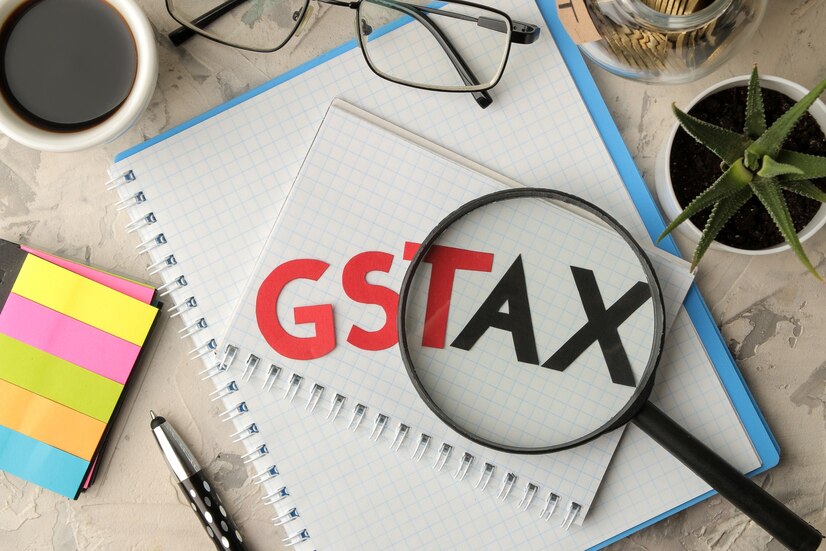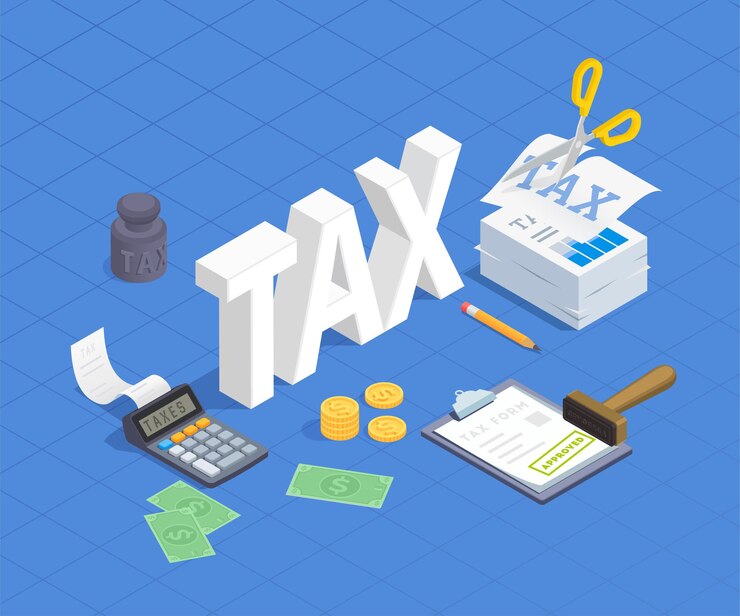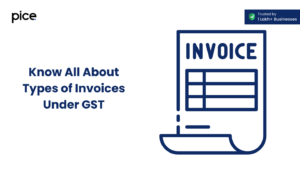Fundamentals of GSP and ASP and Their Roles in GSTN
- 15 Aug 24
- 13 mins

Fundamentals of GSP and ASP and Their Roles in GSTN
Key Takeaway
- GST Suvidha Providers (GSPs) and Application Suvidha Providers (ASPs) play crucial roles in facilitating GST compliance through technology-driven solutions and secure data management practices.
- GSPs act as a bridge between taxpayers and the GSTN, providing the necessary infrastructure for secure and efficient data transmission, while ASPs offer user-friendly applications to assist in accurate GST filing and compliance.
- The GSP ecosystem includes various stakeholders such as taxpayers, GSPs, ASPs, and regulatory bodies, all coordinated through the GSTN to ensure a smooth tax administration system.
- Being both an ASP and a GSP can significantly enhance service efficiency, providing end-to-end solutions from data collection to return filing and improving response times for taxpayer inquiries.
- The introduction of ASPs and GSPs has made the GST filing process more accessible and manageable for businesses by automating complex processes and integrating different stages of compliance into a single platform.
What is GST Suvidha Provider (GSP)?
A GST Suvidha Provider (GSP) is an entity approved by the GSTN to help taxpayers comply with the provisions of the GST law through its platform. GSPs are typically technology-driven companies that develop tools and software solutions to simplify various GST-related processes, including registration, tax filing, and compliance for businesses of all sizes. They act as a bridge between the taxpayers and the GSTN (Goods and Services Tax Network), ensuring that the data flow is secure, quick, and accurate. GSPs provide innovative solutions that can integrate with the taxpayer’s existing IT infrastructure to fetch, populate, and push data directly to the GST portal, facilitating easier and more effective tax compliance.
GSTN (Goods and Services Tax Network)
The Goods and Services Tax Network (GSTN) is a not-for-profit, non-government organization that manages the entire IT system of the GST portal in India. This network serves as the technological backbone of the GST regime in the country and is tasked with facilitating registration, return filing, and payment of GST. It also ensures the integration of state and central government systems with the GST portal. The GSTN is pivotal in implementing the IT infrastructure designed to provide essential services to all stakeholders, which include taxpayers, the government, and other entities involved in economic processes. The network supports the transmission and processing of GST data across state lines making the taxation system simpler, transparent, and effective.
Role of GSP in GST

GST Suvidha Providers (GSPs) play a critical role in the GST architecture by facilitating seamless tax compliance for businesses and taxpayers. Here are the key functions and roles of GSPs in the GST framework:
- Data Integration: GSPs enable the integration of existing IT infrastructure of a taxpayer’s business processes with the GST network. This allows for automated data transfer between enterprise resource planning (ERP) systems and the GST portal without manual intervention, reducing errors and saving time.
- Return Filing Assistance: GSPs provide support and tools necessary for preparing and filing GST tax returns. They ensure that the data conforms to the GST law’s requirements by validating the format and content before submission.
- Security and Data Privacy: Ensuring the security of the data transmitted to the GSTN is a major responsibility of GSPs. They implement high-standard security measures to protect against data theft or leakage during the transmission process.
- Real-Time Data Processing: GSPs offer platforms that allow real-time data processing of transactions, which helps in immediate compliance and aids businesses in making informed decisions based on the latest data.
- Customer Support and Consultancy: They provide customer support to resolve GST-related queries from businesses and also offer consultancy services for better tax planning and compliance based on analytical reports generated from taxpayer data.
- Compliance Management: GSPs assist businesses in maintaining complete compliance with GST regulations through timely updates about changes in tax rates, rules, and procedures, thereby preventing any non-compliance penalties.
GSP Ecosystem
The GSP ecosystem comprises multiple stakeholders working together to ensure smooth and effective tax administration under the GST system. This ecosystem includes:
- Taxpayers: Businesses of all sizes who need to comply with GST laws are the primary users of GSP services.
- GST Suvidha Providers (GSPs): Entities authorized by the GSTN to provide the technological backbone for GST compliance. They develop applications that are used by taxpayers to interact with the GSTN.
- Application Service Providers (ASPs): They often partner with GSPs to use the infrastructure developed by the GSPs to offer customized solutions to taxpayers. ASPs focus on the application layer of the services which includes tax calculation, data analytics, and filing returns.
- GSTN: The Goods and Services Tax Network acts as the central system that coordinates all digital resources and services across the GST regime. It is responsible for maintaining and upgrading the GST portal.
- Regulatory Bodies: The Central and State Governments and the GST Council who regulate and oversee the functioning of the entire GST system, including the operations of GSPs.
Together, these components form a robust digital infrastructure that supports the comprehensive needs of the country’s GST compliance mechanisms. The GSP ecosystem not only helps in simplifying the compliance process for taxpayers but also ensures that the GSTN can function efficiently and without discrepancies.
Existing GSPs
GST Suvidha Providers (GSPs) are pivotal in facilitating the smooth transition and continuous operation of the GST regime, helping businesses comply with the tax requirements efficiently. There are numerous GSPs in India, accredited by the GST Network (GSTN) to ensure widespread tax compliance and accessibility of technology solutions for all sizes of enterprises. Below is a list of some notable GSPs:
| Company Name | Description |
|---|---|
| Tata Consultancy Services (TCS) | One of India's largest IT companies, offering comprehensive GST compliance solutions for various sectors. |
| Reliance Corporate IT Park Limited | A subsidiary of Reliance Industries, providing tailored GST solutions to help taxpayers comply with GST regulations. |
| Tech Mahindra Ltd | Known for robust IT solutions, it also provides end-to-end GST compliance solutions. |
| Ernst & Young LLP (EY) | Utilizes its global tax service experience to offer GSP solutions that simplify GST processes. |
| Deloitte Touche Tohmatsu India LLP | Combines expertise in tax services with technology to provide effective GST compliance services. |
| Infosys Limited | Offers GSP services aimed at streamlining GST filings and compliance through automation and integrated solutions. |
| KPMG India Pvt. Ltd | Provides GST compliance, advisory, and technology solutions tailored to the Indian market. |
| Masters India Pvt. Ltd | Known for its autoTax GST software, which helps businesses in filing returns and managing GST compliance. |
| Bodhtree Consulting Ltd | Specializes in IT consulting and provides GSP services that focus on simplifying GST through innovative technology. |
| Spice Digital Limited | Offers solutions designed to make GST compliance easy for small and medium businesses. |
| Alankit Limited | Provides a range of e-governance, finance, and tax services focusing on seamless GST compliance. |
This table neatly organizes the GSPs and briefly describes their contributions to GST compliance, making it easier to understand their roles and services.
Role of ASP in GST
The role of an ASP in the GST ecosystem is multifaceted and crucial for ensuring smooth tax administration and compliance for businesses, especially SMEs (Small and Medium Enterprises) and larger organizations. Here are some of the key functions and responsibilities of ASPs:
- Data Management: ASPs offer solutions for managing vast amounts of data related to sales, purchases, and GST filings. This includes collecting, processing, and storing data securely.
- Tax Calculation and Validation: They calculate the GST payable and check the compliance of the data as per GST rules before it is filed. ASPs ensure that all the tax calculations are accurate and meet the regulatory requirements.
- Reconciliation of Invoices: One of the critical features of ASP software is to reconcile invoice data uploaded by the suppliers with the purchasers’ data. This helps in identifying mismatches and taking corrective actions, which is vital for accurate GST filings.
- Filing Assistance: While GSPs provide the pathway to file returns to the GSTN, ASPs prepare the returns using the data generated by their systems. They assist businesses in ensuring that the returns are error-free and filed on time.
- Analytics and Reporting: ASPs also provide analytics services, offering insights into the GST data to help businesses understand their tax obligations better, optimize their tax credits, and make informed financial decisions.
- User Interface and Experience: They develop user-friendly interfaces that make it easier for businesses to navigate their GST obligations. The simplification of the filing process through effective UI/UX designs helps reduce the burden on taxpayers who may not be tech-savvy.
- Integration Services: ASPs integrate their applications with various business software systems (like ERP, Accounting software), ensuring that data flows seamlessly from business systems to the GSTN via GSP.
The combination of these roles helps taxpayers not only comply with the complicated GST laws but also manage their internal records more effectively, reduce compliance costs, and minimize errors in tax filings. This comprehensive support is vital for maintaining business efficiency and ensuring compliance with India’s GST laws.
GSP and ASP Relation to the Taxpayer

The relationship between GST Suvidha Providers (GSPs), Application Suvidha Providers (ASPs), and taxpayers is crucial in ensuring smooth tax operations under the GST regime. Both GSPs and ASPs play complementary roles in helping businesses comply with GST requirements, but they interact with taxpayers in different ways:
GSPs:
GSPs act as a bridge between the GST network (GSTN) and the taxpayers. They provide the essential infrastructure and gateway services that enable the secure electronic filing of GST returns and other related documents directly to the GSTN. Their main role is to ensure that the data transmitted to the GSTN is secure, accurate, and in compliance with the regulatory standards.
ASPs:
ASPs, on the other hand, are more directly involved with taxpayers. They offer tailored applications that help in processing GST returns and managing business data related to GST. ASPs enhance the taxpayer's experience by simplifying the preparation and filing process through user-friendly software solutions that handle tasks such as invoice generation, tax calculation, and compliance checks.
Interaction:
- GSPs provide the technological backbone and direct GSTN connectivity.
- ASPs use this infrastructure to offer enhanced services to taxpayers, ensuring that their filings are compliant with GST regulations.
- Taxpayers may not directly interact with a GSP but might use the services offered by an ASP which in turn connects with the GSTN through a GSP.
Benefits of being an ASP who is also a GSP
Combining the roles of an ASP and a GSP can offer significant advantages, enhancing the efficiency and effectiveness of the services provided to taxpayers. Here are some of the benefits:
- Integrated Services: Being both a GSP and an ASP allows a company to offer end-to-end solutions from data collection, processing, and filing to GSTN. This integration can lead to smoother workflows, as there is no need to coordinate between two separate providers.

Control Over Data Security: As the provider controls both application and network layers, they can implement robust data security measures. This minimizes risks associated with data breaches or errors during transmission to the GSTN.
- Cost Efficiency: By consolidating the roles, the provider can offer more competitive pricing by eliminating the overhead costs associated with outsourcing parts of the service to another provider. This can be particularly advantageous for small and medium enterprises (SMEs) looking for cost-effective compliance solutions.
- Faster Response to Changes: Being both a GSP and an ASP provides the agility to quickly adapt to changes in GST laws and regulations. The company can promptly update their software systems and processes, ensuring that taxpayers always have access to the most current and compliant tools.
- Enhanced Support: Direct control over both the software applications and the GSTN connectivity allows for better coordinated customer support. Taxpayers can receive quicker and more comprehensive assistance with any issues related to GST filing or compliance.
- Streamlined User Experience: There is a seamless user experience since the interface and the backend are managed by the same entity. This uniformity can significantly enhance the ease of use for taxpayers, leading to higher satisfaction levels.
Overall, being both an ASP and a GSP can provide a more holistic, secure, and efficient service offering to taxpayers, helping them navigate the complexities of GST compliance more effectively.
💡If you want to pay your GST with Credit Card, then download Pice Business Payment App. Pice is the one stop app for all paying all your business expenses.



















